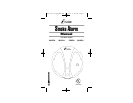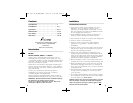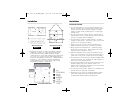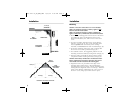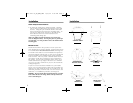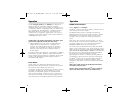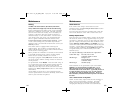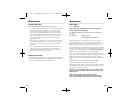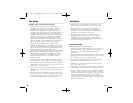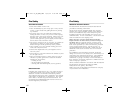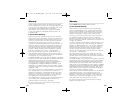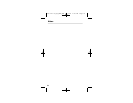
4
3
I n s t a l l a t i o n
I n s t a l l a t i o n
• Install smoke alarms on sloped, peaked or cathedral
ceilings at or within 0.9 m (3') of the highest point
(measured horizontally). NFPA Standard 72 states:
“Smoke alarms in rooms with ceiling slopes greater than
0.3 m in 2.4 m (1 foot in 8 feet) horizontally shall be
located on the high side of the room.” NFPA Standard
72 states: “A row of detectors shall be spaced and
located within 0.9 m (3') of the peak of the ceiling
measured horizontally” (Image 2B).
IMAGE 1A
IMAGE 1C
IMAGE 1B
SINGLE FLOOR PLAN MULTIPLE FLOOR PLAN
TOTAL HOME PROTECTION
Locations to Avoid
• Do not install within 0.9 m (3') of the following: The
door to a kitchen, or a bathroom that contains a tub or
shower, forced air ducts used for heating or cooling,
ceiling or whole house ventilating fans, or other high
air-flow areas.
• Do not place the alarm where drapes or other objects
will block the sensor. Smoke must be able to reach the
sensor to accurately detect conditions.
• Do not install in peaks of vaulted ceilings, “A” frame
ceilings or gabled roofs. (Less than 10 cm (4") from the
peak of an “A” frame type ceiling.)
• Install at least 30.5 cm (12") away from fluorescent
lights as electronic noise may cause nuisance alarms.
• Keep out of insect infested areas. Avoid excessively
dusty, dirty or greasy areas. Dust particles may cause
nuisance alarms or failure to alarm.
• Extreme temperatures may effect the sensitivity of the
alarm. Do not install in areas where the temperature is
colder than 4.4°C (40°F) or hotter than 37.8°C (100°F).
• Do not install in areas where the relative humidity (RH)
is greater than 85%. Very humid areas, with moisture or
steam, can cause nuisance alarms.
• Avoid placing ionization smoke alarms in kitchen areas.
Normal cooking may cause nuisance alarms. If a
kitchen alarm is desired, it should have an alarm silence
feature or be a photoelectric type.
• Do not place in the garage. Particles of combustion are
present when you start your automobile.
• Smoke alarms are not to be used with detector guard s
unless the combination (alarm and guard) has been
evaluated and found suitable for that purpose.
0918-7227-02_DC_MAN_ENG 10/5/04 4:40 PM Page 2



